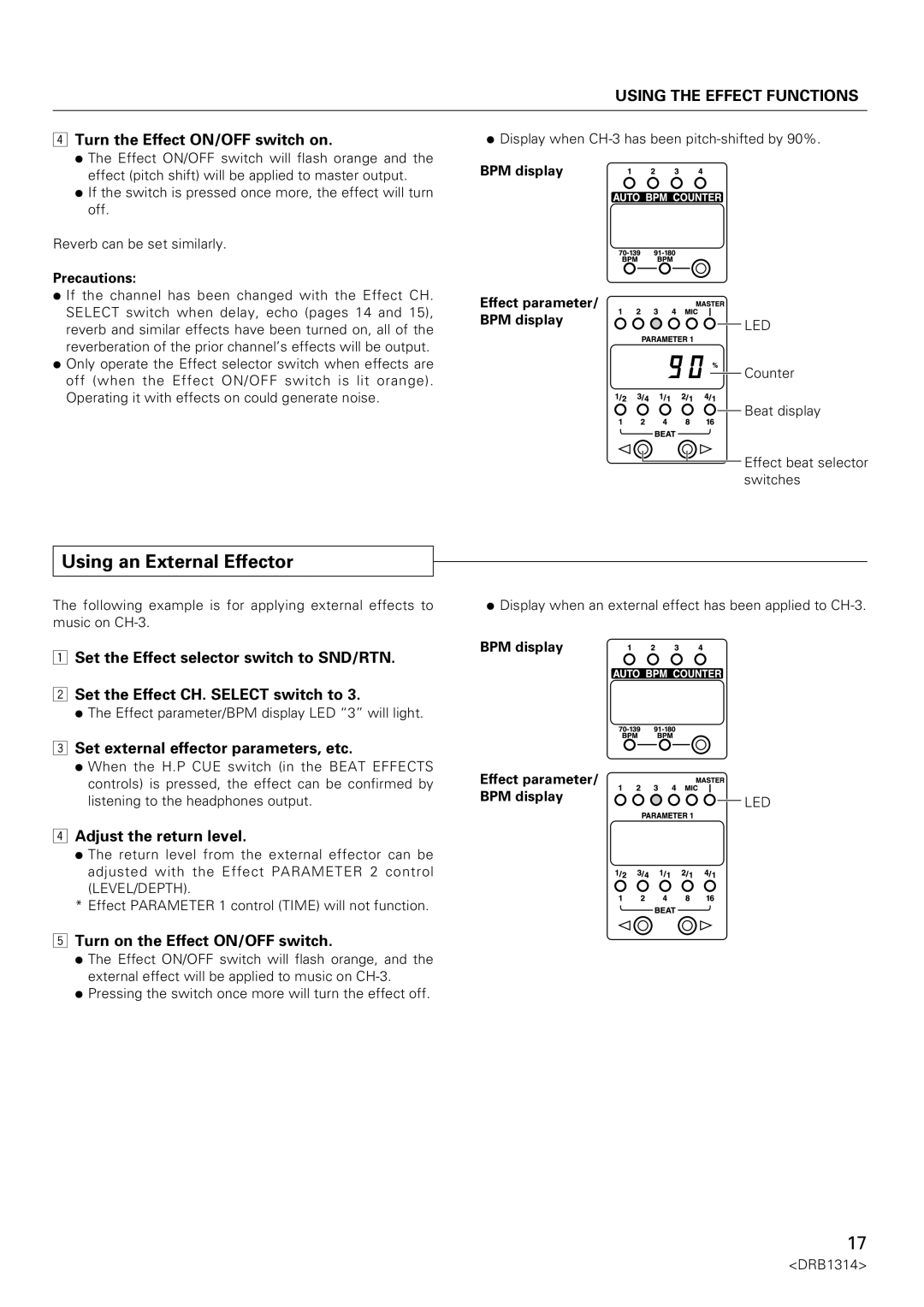
USING THE EFFECT FUNCTIONS
4Turn the Effect ON/OFF switch on.
÷The Effect ON/OFF switch will flash orange and the effect (pitch shift) will be applied to master output.
÷If the switch is pressed once more, the effect will turn off.
Reverb can be set similarly.
Precautions:
÷If the channel has been changed with the Effect CH. SELECT switch when delay, echo (pages 14 and 15), reverb and similar effects have been turned on, all of the reverberation of the prior channel’s effects will be output.
÷Only operate the Effect selector switch when effects are off (when the Effect ON/OFF switch is lit orange). Operating it with effects on could generate noise.
÷Display when
BPM display
Effect parameter/ |
|
BPM display | LED |
| |
| Counter |
| Beat display |
| Effect beat selector |
| switches |
Using an External Effector
The following example is for applying external effects to music on
1Set the Effect selector switch to SND/RTN.
2Set the Effect CH. SELECT switch to 3.
÷ The Effect parameter/BPM display LED “3” will light.
3Set external effector parameters, etc.
÷When the H.P CUE switch (in the BEAT EFFECTS controls) is pressed, the effect can be confirmed by listening to the headphones output.
4Adjust the return level.
÷The return level from the external effector can be adjusted with the Effect PARAMETER 2 control (LEVEL/DEPTH).
* Effect PARAMETER 1 control (TIME) will not function.
5Turn on the Effect ON/OFF switch.
÷The Effect ON/OFF switch will flash orange, and the external effect will be applied to music on
÷Pressing the switch once more will turn the effect off.
÷Display when an external effect has been applied to
BPM display
Effect parameter/ |
|
BPM display | LED |
|
17
